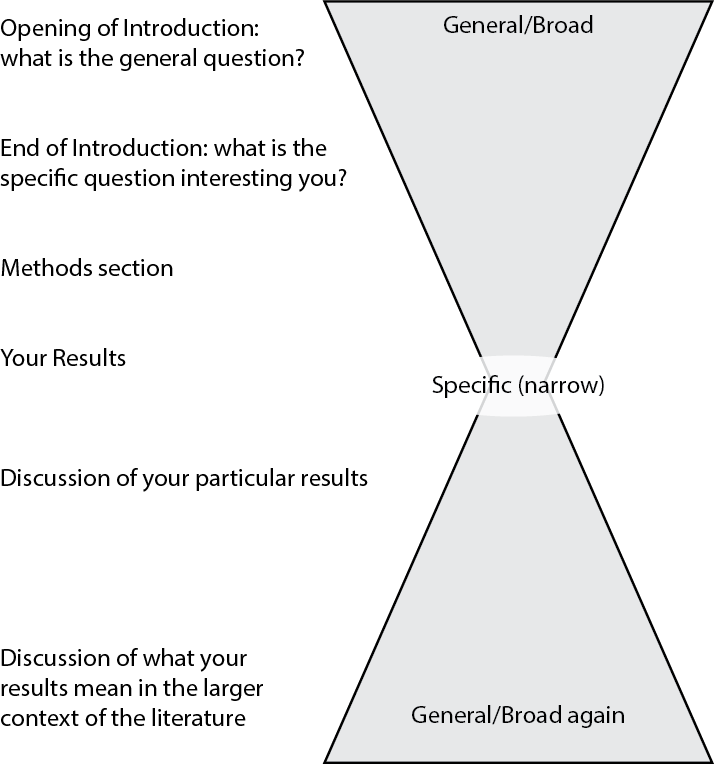Chapter 8 How Articles Are Organized
Part 3 focuses specifically on the most commonly seen format of scientific articles and lab reports in biology. We show you what goes in each section, point out where our own students struggle with each section, and suggest ways you can avoid common pitfalls.
This YouTube video is a good overview of the parts of a scientific article.
8.1 Good Articles & Reports Are Shaped Like An Hourglass
We do not mean that literally. What we mean is that a typical lab report or scientific article is organized in an hourglass shape conceptually.

Figure 1: Hourglass model of an article or report
The Introduction begins with general information about the topic (wide part) that gets more specific (narrower) as it moves to the hypothesis statement. The Methods and Results sections are very narrowly focused on the details of the experiments being described. The figures and tables are part of the narrowly focused portion of the report. In the Discussion, the lab report widens out again, and tries to connect the reported findings with what others in that field have reported.
The Title, Abstract, and Literature Cited are not part of this hourglass, but they are important elements nonetheless.
Each of these sections is explained in more detail on separate Guide pages. We have included poorly and well-written examples of each section that we pulled from our database of past student reports.
8.2 Other Orders and Formats
The order we just described is widely used but is by no means the only format you might encounter. Two others are fairly common:
- Combined Results and Discussion. Rather than present the data then interpret it, the authors do both at the same time.
- Introduction, Results and Discussion, Methods last. Some journals do this because most of their readers skip the Methods and go straight to the Results.